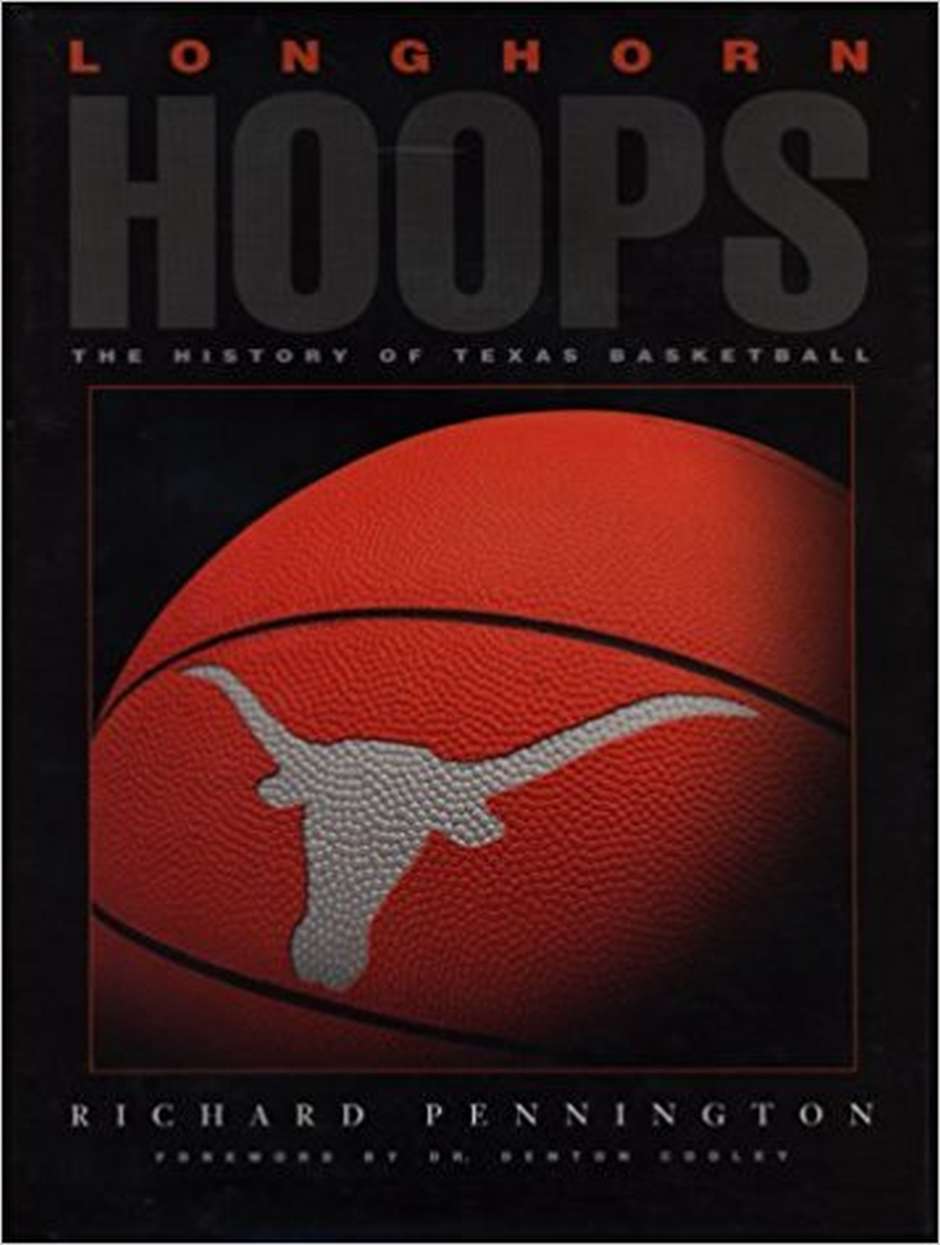Description
University of Texas football had been covered (including by me) several times, and books had been written about baseball and track. But nobody had addressed basketball, and that was a rather large omission in my view. So in 1995, I started gathering information and putting together a rough framework for what would become Longhorn Hoops. I knew UT athletic director DeLoss Dodds and told him about my plans. He invited me to his office at Bellmont Hall and, to make a long story short, he agreed to back it. A contract was signed that was grossly one-sided. I was not paid nearly enough, and a substantial amount of the money I got went straight into producing the book.
Work began. I did back-breaking research, going over old copies of the Daily Texan (student newspaper), Cactus (yearbook), Alcalde (alumni magazine) and Austin American-Statesman. I decided early on to make it comprehensive, covering every game played by the men’s and women’s teams at the university, starting nearly a century earlier. I have to say, the most interesting story I found pertained to women’s P.E. director Anna Hiss. In the 1920s, she led a nationwide movement to eradicate competitive basketball for distaff students. Hiss and her cohort were actually high-minded, seeking to avoid the corrupting influence they had observed on the male side of the ledger. She succeeded—for a while. It took about 50 years to roll back the anti-competitive structure she had put in place. I continue to wait for a graduate student to do her or his master’s thesis or doctoral dissertation on this topic.
I had a press pass for the 1996, 1997 and 1998 seasons which allowed me to eat free grub, sit on press row and attend interview sessions after games. Today’s game is far different from when Jack Gray, Raymond Downs or Jay Arnette bestrode the Gregory Gym hardcourts. What we have now is faster, more muscular, much more skilled and played above the rim. On the other hand, when the audiences were composed primarily of 18-, 19-, 20- and 21-year-old students, the level of enthusiasm was higher than what is seen today, with lots of middle-aged people and retirees sitting on plush seats at the Erwin Center.
Toward the end of this project, I was going broke and had to bring eight years of working as a full-time freelance writer to a close. I got a job as a proofreader at a translation agency in the downtown area. One of my co-workers paid me a high compliment when he said of Longhorn Hoops that each chapter was successful because my interest in the subject of UT basketball never waned. Publication was celebrated with a party at historic Scholz Garten, just a stone’s throw from the Erwin Center.
Denton Cooley played on the Texas team in the late 1930s before going on to medical school at Johns Hopkins and international fame as a heart surgeon. He wrote the foreword, which brought him to the belated attention of the UT athletic department. They convinced Dr. Cooley to write a big check during the fundraising drive for an adjacent 44,000-square foot practice and conditioning facility. It is strictly off-limits to rank-and-file students, which should not come as a surprise. Anyone who read my book closely could detect an authorial viewpoint or even “attitude.” I do not and cannot deceive myself about the extent to which college sports—by which I mean primarily football and men’s hoops—have been professionalized. Student-athletes? Please!


Reviews
There are no reviews yet.